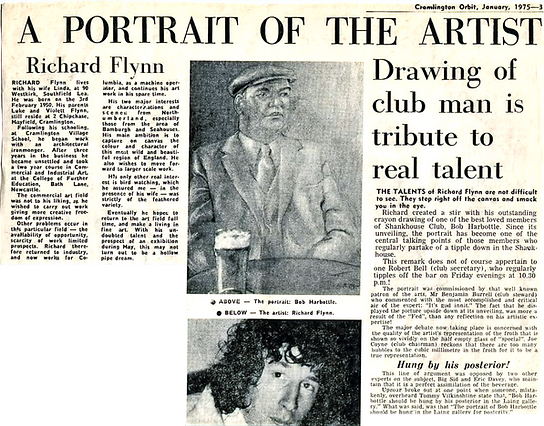


Robert Harbottle

Robert Harbottle, taken from a newspaper article
Robert "Bob" Harbottle was only 21 when he was sentenced to eight years' imprisonment for his part in the derailment of the train in 1926.
In his response to Newcastle's Evening Chronicle in 1965, Bob was adamant he wasn't going to talk about the past. As one of the four survivors, he was also interviewed for the BBC's Yesterday's Witness (1970) and still insisted it was something he rarely talked about. However, he is filmed in a workingman's club, and his contribution is very informative.
In her excellent book, Let No Wheels Turn: The Wrecking of the Flying Scotsman, 1926, Margaret Hutcherson mentions the steps Bob's family took towards securing his release. Margaret outlines how the Harbottle family Bible contained many letters written by Bob while he was in prison, and how the family wrote a letter to the Home Secretary asking for his release.
So what else do we know about Bob apart from the fact he was the youngest imprisoned Wrecker? Based on an article that appeared in The Cramlington Orbit in January 1975, Bob was born to parents James and Margaret Harbottle on September 10, 1905, one of six brothers and a sister.
The family lived in West Cramlington, and he was taught by school teacher "Granny" Forbes.
Aged 13, he began work at Wrightson Pit in the village, a stone's throw from the family home, at the bottom of the garden. At the time of his arrest, Bob was living with his parents at 25 Lane Road in West Cramlington village.

Addresses of the Cramlington Train Wreckers in 1926
(Image credit: Brian Ridley)
At the initial hearing at Newcastle's Moot Hall police court on June 7, the miners had no legal representation and were allowed to ask questions in open court. The transcription is in Michael Stockham's 2010 book "Arthur'll Stop You One"(p.22, 23, 24 and 25).
Bob Harbottle asked Lyle Waugh: "Were you not on the railway?"
Waugh replied: "I was not."
Incredulous, Bob retorted: "You lifted the plate!"
Waugh denied this.
Cast as one of the "ringleaders" by the people who turned King's evidence, Bob was sentenced to eight years in prison for his part in the derailment in May 1926. He served 3.5 years at Maidstone before being released on December 23, 1929.
Upon gaining his freedom, Bob returned to the Cramlington coalfield, working at Rightson Pit until it closed in 1935. He then moved to the face at New Pit in West Cramlington.

Northumberland-born artist Richard Flynn and his portrait of Bob Harbottle in the Cramlington Orbit (January 1975)
(Image credit: Richard Flynn)

Robert "Bob" Harbottle,
by Richard Flynn
(Image credit: Richard Flynn)


